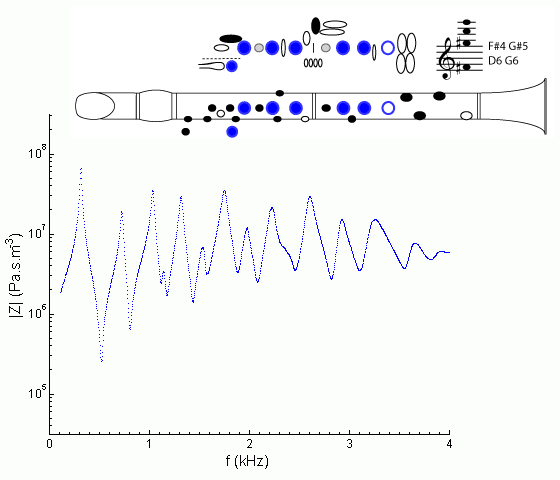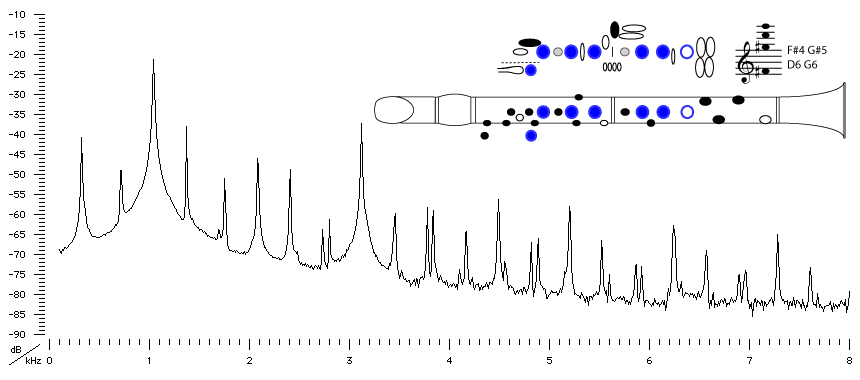| Acoustics of the clarinet |
Bb clarinet |
multiphonic
|
| |
|
||||||||||
| |
|
|
|
|
|
|
|
|
|
|
|
| |
|
|
|
|
|
|
|
|
|
|
|
| |
|
|
|
|
|
|
|
|
|
|
|
| |
|
|
|
|
|
|
|
|
|
|
|
| |
|
|
|
|
|
|
|
|
|
||
|

|
Fingering Acoustic schematic Non-specialist introduction
to acoustic impedance Notes are the written pitch. |
Waves travelling down the bore are partially reflected at the first two open holes, which are respectively responsible for the first two notes in the multiphonic. Reflection at the next open hole would normally be expected to give a note of C#6, but in the cases of the higher notes the complicated cross fingering, and the influence of what are effectively register holes complicate the tuning.

Sound spectrum
of a Bb clarinet
played using fingering for the multiphonic F#4, G#5, D6 and G6.
For more explanation, see
Introduction to clarinet acoustics
![]()
![]() You can hear the multiphonic F#4, G#5, D6 and G6
played.
You can hear the multiphonic F#4, G#5, D6 and G6
played.
|
Contact:
Joe Wolfe
/ J.Wolfe@unsw.edu.au |